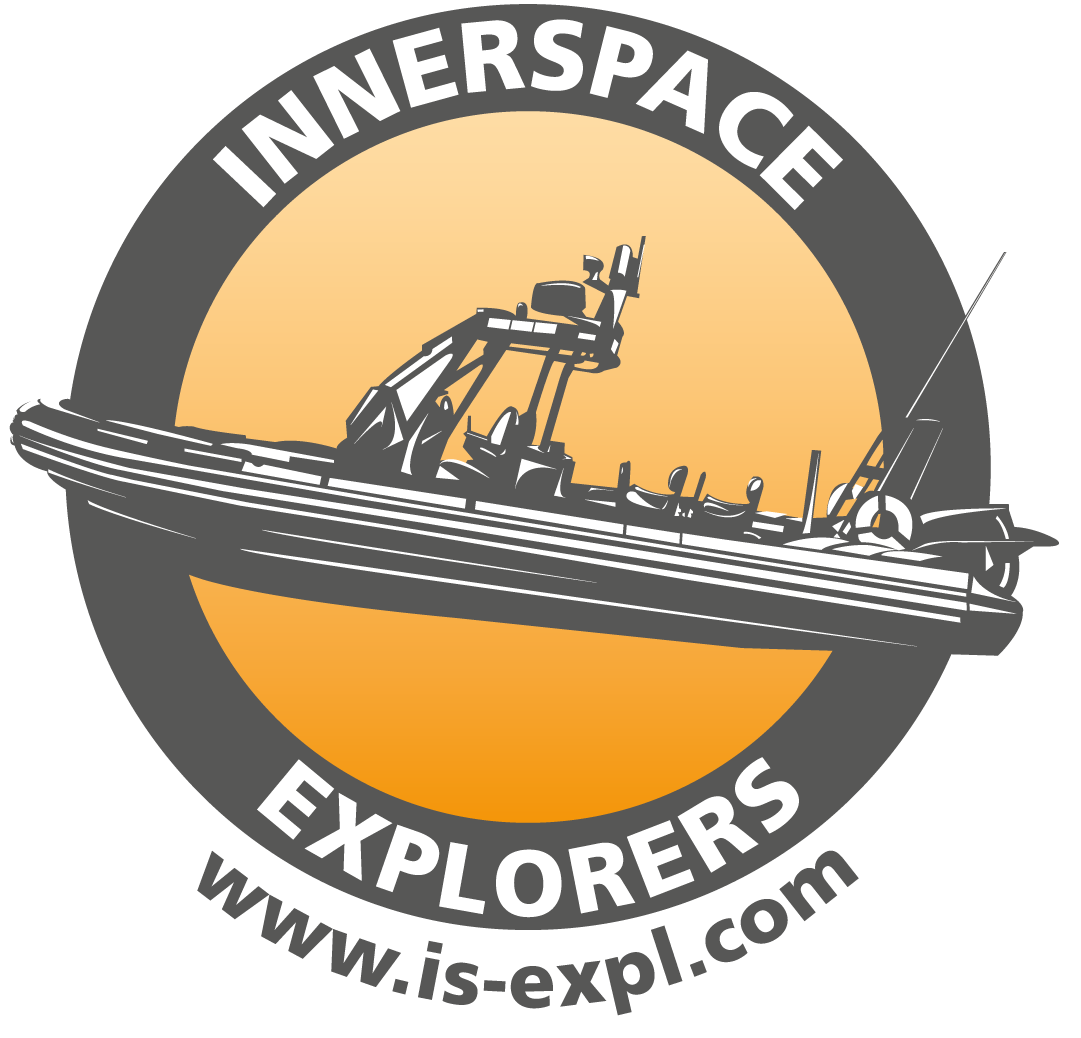Exploration Diver Level I
What does that contain?
Prerequisites
- Must be at least a minimum 18 years of age.
- Must be ISE BoE certified or equivalent.
- Must have a minimum of 100 dives beyond open water certification.
- Must be able to perform the following:
400 meters swimming in less than 15 min & free dive a distance of 15 Meters.
or alternatively
Snorkel 800 meters (with fins) in less than 18 min. & free dive a distance of 25 meters
or alternatively
Run 1000 Meters in less than 5 min.
Purpose
The ISE Exploration Diver Level 1 course is structured to prepare divers for the rigors of exploration diving, and to familiarize them with the use of different types of breathing and decompression mixtures. The training focuses on expanding the skills learnt in the ISE Basic of Exploration, and is designed to build the necessary and essential skills required for safe and successful exploration diving. This will include problem identification and resolution, and building the capacity progressively for more challenging dives. In this course, students will be trained in:
- the use of double tanks and in the potential failure problems associated with them;
- the use of Trimix and Nitrox
- the use of Helium to minimize narcosis;
- and the applications of single decompression cylinder diving with respect to decompression procedures.
- the applictaion of a single Bottomstage containing the same gas then the backmounted doubles.
The class will focus on Nitrox and Trimix, for dives in the 60 meter depth range, and provides an excellent foundation on which divers can build their diving experience and prepare for further ISE programs.
PLEASE BE AWARE THAT THE CLASS CAN BE CONDUCTED IN:opencircuit backmount / sidemount or any rebreather that you are certified on.
Duration
This class will be conducted over a duration of 5 days, and involves at least 5 dives.
Limits
- Student to instructor ratio will not exceed 3:1 in all in-water and surface sessions.
- Trimix 21/35 & 18/45, 50% Nitrox Deco, 1 Stage,
- Maximum training depth of 60 m, Max average depth of 48 Meters
- No overhead environment. (i.e caves)
- Certification expires after 3 years. Students have to re-qualify. (An evaluation dive)
Topics
- Physics
- Pressure and gas law review
- Math relevant for planning, mixing, and using enriched air
- Physiology
- Hypoxia
- Hyperoxia
- Oxygen toxicity
- CNS
- Pulmonary toxicity
- Tracking multilevel, multi-dive, and multi-day exposures
- Inert gas narcosis
- Inert gas absorption and elimination
- Carbon dioxide toxicity
- Carbon monoxide toxicity
- Hyperthermia
- Hypinstrmia
- Decompression illness
- Accelerated and general decompression strategies
- Decompression practices on air, enriched air, and oxygen
- Generic tables, computers, and custom tables
- Introduction to normoxic and hyperoxic Trimix
- Advantages over deep air
- Equipment considerations (DIR emphasis)
- Singles
- Doubles
- Decompression stage bottles
- BC/harness
- Regulators, depth gauges, pressure gauges, and hose routing
- Manifolds
- Surface marker buoys and spools (for deco platforms)
- Computers and bottom timers
- Exposure suit appropriate for the environment
- Dive planning
- Operational planning
- Support
- Teams
- Team planning
- Gas matching
- Oxygen limits
- Nitrogen limits
- Emergency procedures
- Omitted decompression procedures
- Miscellaneous issues including limited deco gas, out of gas, team separation, etc.
- Procedures
- Bottom and deco gas
- Normal operations
- Procedures for failure, loss, or inadequate supply
- Gas mixing
- Analyzing and labeling gas supplies
- Line following
- Survey technics appropriate for level of diving
Drills
- Reel and guideline use
- Dive team order and protocols
- Touch contact
- Manifold operation and failures
- Handling of 2 Stages
- Use of safety spools and reels
- Basic navigation skills
- Pre-dive drills
- Survey and measuring technique
Equipment
- Tank/s: For OC setup, students are required to use double tanks. Double tanks setup requires a dual outlet isolator manifold, which allows for the use of two first-stages. All dives must start with a minimum of 80 cubic feet/2250 liters of gas. Divers must also have access to one deco tank/cylinder of 50% Nitrox )7 Liter) and one Stage tak with Bottomgas (80cft)
- Regulators: For double tank setup, one first stage must provide a second stage on a 2 meter hose and inflation for buoyancy compensator. The other must provide a second stage on a hose not exceeding 60 cm, attached with a shock cord on the mouth piece. It must also provide a pressure gauge on a hose not exceeding 60 cm, and inflation for dry suit. (where applicable) One first stage must provide a second stage on a 100 cm hose and also a pressure gauge.
- Backplate: A rigid and flat platform, of metal construction held to the diver by one continuous piece of nylon webbing. This webbing should be adjustable through the plate with triglides to hold positions, and a buckle to secure the system at the waist. A crotch strap attached to the lower end of the plate and has a loop to pass the waist band through to secure the system. A knife sheath should be attached at the waist and will be adjusted beside the crotch strap when ready. This webbing should support five D-rings; 1 on the left, and 1 on right shoulder strap, both approximately the collar bone level. 2 on the crotch strap with one at the front and one at the buttocks. The shoulder straps should have small rubber bands to hold the back-up lights. The system should have no unnecessary components.
- Buoyancy Compensator Device: The buoyancy compensator device should be back-mounted and streamlined with only one inflator. There should be no bungee cords of any sort on the buoyancy cell. The lift should not exceed 25 kg for doubles. Wing size and shape should be appropriate to the cylinders used during training.
- Lighting Systems: The primary light that should be of a canister with light cord connecting to the light head design. The battery should be inside the canister and a slot to position it on the right hip location on the waist strap. The light head should have a goodman handle with a bolt snap attached, and a loop at the bottom of the light head. The primary light should be at least a 10 watts HID or equivalent.
At least two back-up lights that are of a twist on and off bezel design. It should be an in-line battery design that do not overdrive the bulb. There should be no on/off switch for the back-up lights. The back-up lights will have bolt snaps attached to the back of it for stowage to the system. - At least one depth measuring device.
- At least one knife or line cutting device.
- At least one low volume mask.
- One closed style surface marker (3.3ft / 1m)
- One closed style lift bag (80lbs / 36kg)
- One time keeping device.
- One pair of non split, rigid fins.
- One underwater notepad.
- One spool of at least 30 meters of line per diver.
- One primary reel of at least 90 meters of line per diver.
- One exposure suit that is appropriate for the training environment and water temperature.
- Decompression tables.
All students must have the following equipment for the course. Please email the instructor should you have further enquiries.
Classes
| Location | city | Start date | Instructor | Details |
|---|---|---|---|---|
| Norway | Skottevik | 2024-09-02 | Jochen Grau | Details |
| Philippines | Sipalay, Negros | 2024-02-28 | Juan Naval | Details |
Instructors
| Name | Country | City | Details |
|---|---|---|---|
| Alain Dobbelaere | Belgium | Waarschoot | Details |
| Senne Strobbe | België | Laarne | Details |
| Achim Schlöffel | Germany | München | Details |
| Rico Dobbelaere | België | Waarschoot | Details |
| Jochen Grau | DE | Nürnberg | Details |
| Florian Symoens | Belgium | Gent | Details |
| Juan Naval | Philippines | Muntinlupa City | Details |
| Mike Baudach | Spain | Capdepera | Details |



